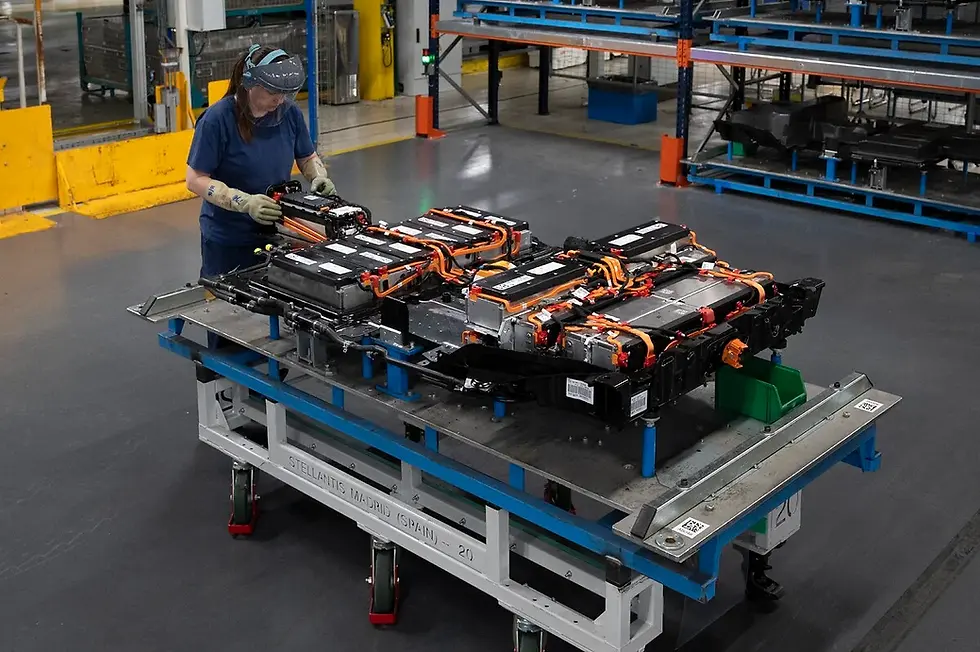Citroën C4: opening of a battery assembly plant in Madrid
- Jérémy

- Jun 24, 2024
- 2 min read

The Stellantis production centre in Madrid is taking a decisive new step in its commitment to electrification with the inauguration of new battery assembly facilities. Dedicated to the Citroën ë-C4 and ë-C4 X, this innovative infrastructure will allow the production of up to 50,000 batteries per year, increasing the plant's autonomy and efficiency.
State-of-the-art capacities and technologies
Located on a 2,000 m² site close to the assembly plant, these new facilities are designed to meet the growing demand for electric versions of the Citroën C4 and C4X.
"The construction of these new battery assembly facilities has become necessary due to the increase in demand for the electric versions of the Citroën C4 and C4X, which has peaked at more than 50%," explains the Stellantis press release. This significant increase in production reflects the growing interest of consumers in electric vehicles, and Citroën is fully committed to this energy transition with its 100% electric versions of the C4 from 2020.
The batteries produced in Madrid are made up of 17 lithium-ion modules managed by an electronic control unit (BMU), with a total capacity of 54 kWh and a weight of 340 kg. Before being installed in vehicles, these batteries undergo rigorous quality controls to ensure optimum performance. The factory is equipped with the latest technology in electrical and waterproofing testing to ensure the reliability and durability of the batteries.

Impact on the plant and the future of Citroën
The Stellantis Madrid battery assembly workshop represents a major step forward for the plant and for the future of Citroën's electric models. In addition to improving logistics and production efficiency, these facilities will enable the plant to better adapt to fluctuations in demand for 100% electric vehicles. This flexibility is essential to maintain the brand's competitiveness in a rapidly changing market.
In line with Stellantis' sustainability strategy, the Madrid plant is equipped with a photovoltaic panel system comprising 15,000 roof panels and 2,000 canopy panels. This installation covers 36.4% of the factory's electricity needs in a clean and sustainable way, with an installed capacity of 7.8 MWp. This solar panel system is a concrete example of Stellantis' commitment to reducing its carbon footprint and adopting sustainable industrial practices.
Transitioning to an electric future
The inauguration of the new battery assembly facility at Stellantis' Madrid plant is a key milestone in the company's Dare Forward 2030 strategic plan, which aims to market all-electric vehicles in Europe by the end of the decade and achieve carbon neutrality by 2038. This initiative not only bodes well for sales of the Citroën C4 and C4X electric vehicles, but also for the future of the Madrid plant itself. With increased battery production capacity and improved logistics, the plant will be well positioned to meet the growing demand for electric vehicles, consolidating Citroën's position as a leader in the energy transition.
In conclusion, Stellantis' initiative at the Madrid plant to create an on-site battery assembly workshop represents a significant step forward in the electrification of the Citroën range. With a state-of-the-art infrastructure and a clear commitment to sustainability, Citroën continues to distinguish itself as a major player in the electric vehicle sector, meeting consumer expectations.






Comments